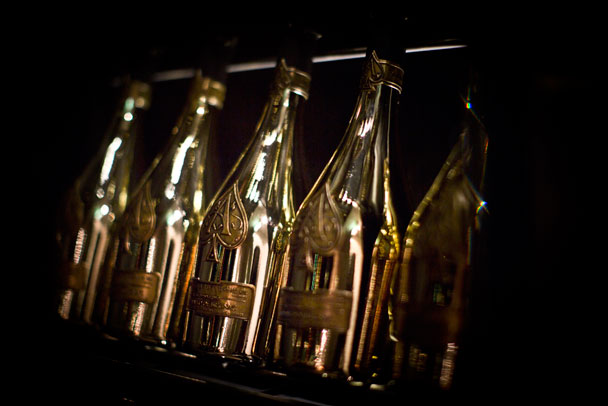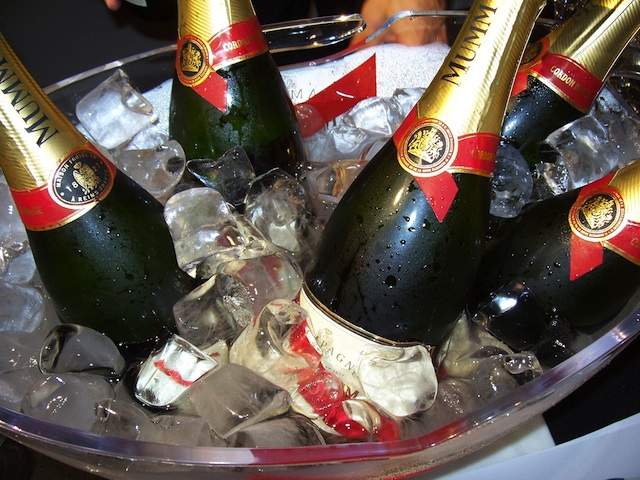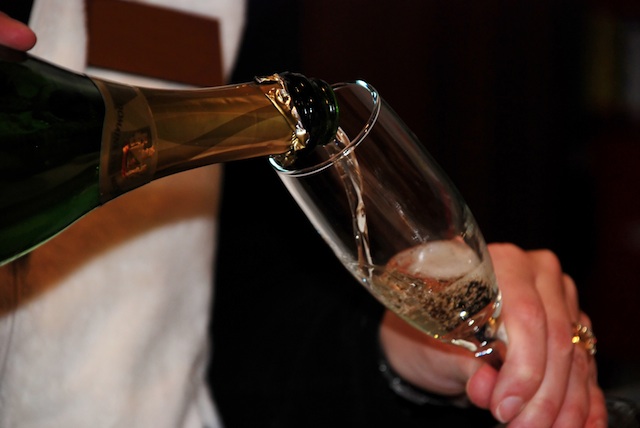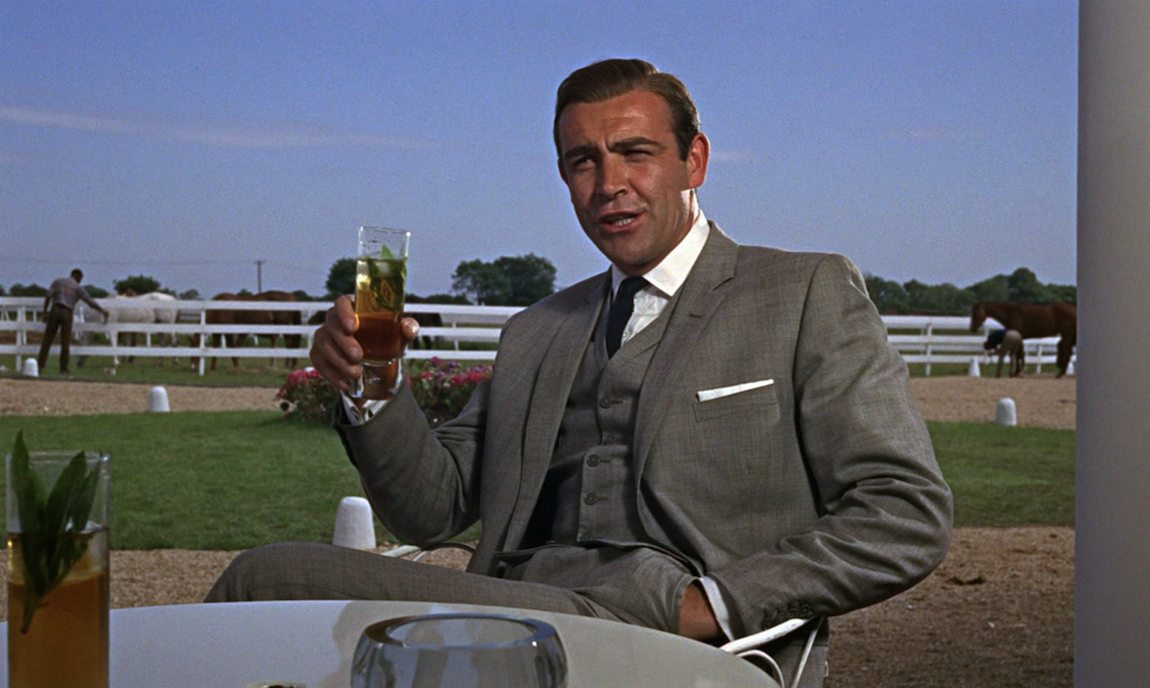A Bluffer’s Guide to Champagne
Baffled by bubbly? Who isn't.
Particularly once those bubbles start going to your brain. We thought it best to enlist the help of an expert to get the fast facts right, so we tracked down journalist and champagne educator Champagne Jayne, who taught us just how damn special the bubble drop actually is. Let us let you in on why.
Champagne 101
Champagne is exclusive to the Champagne region in northern France. Due to the cumulative effects of soil, climate and the cultivation practises, the three types of grapes used (chardonnay, pinot noir and pinot meunier) are married together to produce the world-famous bubbly drop. The Champenois (master Champagne makers) use the lengthy and arduous traditional method that involves the bottle going under a second process of fermentation to create the fizz.
Champagne first gained world eminence through its connection with the baptism of French kings, and consequently royalty spread the word throughout Europe about this exotic wine, awarding it status of opulence and nobility. Nowadays, it is the natural partner for any event where celebration, luxury and romance are themes.
How to Pop and Pour Proper
If you have nearly taken a friend’s eye out opening a bottle before, the following advice will be of great use. In order to open the bottle with the proper pomp, hold it at a 45 degree angle while keeping the cork still and gently twist the bottle. If you’re thinking “but I’ve been twisting the cork this whole time!”, don’t worry, you’re not alone.
Temperature also plays a big part in the art of champagne enjoyment. "Bubbles are part of the pleasure. Serving champagne anywhere between 4.5 degrees Celsius to 7 degrees Celsius is perfect. If it’s too cold it will suppress the aromatics and if it’s too warm, the wine will froth up and then go flat," .. or so Jayne tells us.
Matching Champagne with Food
Because champagne is blended from numerous base wines, Jayne tells us that champagne is like an orchestra of flavour in your mouth and so it matches well with lots of different types of food. "Anything goes, from prawns to pizza!,”. We found this reassuring. Nothing worse than ordering the wrong drink with your meal in the fear of the waiter quietly thinking to himself “pah, amateur”. As it turns out all you need to do is order bubbly. Problem solved, suckers.
However, within this theory we found that vintage champagnes have a slightly richer and heavier palate weight. (Look at us with all this lingo…) Basically, a heavier palate weight means they’re ideal with a more intensely flavoured dish and are a wicked combo for any cheese or delicate dessert.
Is Champagne only for Special Occasions?
"Rubbish! It's like a holiday in a glass!”. Champagne is most frequently associated with exclusive affairs however Jayne believes it is the ultimate icebreaker for any audience and is guaranteed to make anyone smile. "It isn't about being snobby, posh or saving up to celebrate a job or a wedding, it's actually the affordable luxury in life. Everyone can afford the small indulgence of enjoying a really decent glass of fizz on a Friday night."
Champas on the Cheap
This is a toughie because unless you're Gina Rinehart, spending your bucks on vintage champagne might not be so simple. Jayne says that the best value choice on the market at the moment for something exceptional is currently the world's favourite, Moet & Chandon which can be found for around $75. And for the true low cost champagne experience, look no further (and probably go no further) than a bottle of Charles Courbet for $40.
For those who want a James Bond-themed beverage, don't look past his favourite tipple, Champagne Bollinger. The full-bodied classic (much like the man himself) can be spotted for $80. And don't forget to ensure that the label actually says 'Champagne' as well as France. If it doesn't, you've been well bluffed.
Famous Champagne Drinkers
Madame de Pompadour, King Louis XV's favourite mistress, is credited with bringing champagne to the French royal court in the 18th century. She’s also famously quoted as saying, "Champagne is the only wine that leaves a woman beautiful after drinking it.". As for how much she ever drank in one sitting before coming to this conclusion, I’m not so sure.
Winston Churchill was also notorious for enjoying the tipple. And Napoleon was known to take large stocks for the army wherever they campaigned. Want to get even more serious? If you've got a spare 308 bottle handy, why not simulate Marilyn Monroe's habit of bathing in the bubbly stuff every night?
And lest we forget to remind you that it was American author and humorist Mark Twain who had it right all along. It was he who said, "too much of anything is bad, but too much champagne is just right."

Where to Drink Champagne in Auckland?
Most hotels, restaurants and bars in Auckland are stocked with the big names like Mumm, Moet & Chandon and Veuve Clicquot, and you would be hard pressed to not find your favourite on a drinks list anywhere in central Auckland. Below is our picks on how we would spend a day in Auckland chasing the bubbles.
Breakfast tipple:
Andiamo - The popular Bellini would be the ideal way to start your day (probably not on a Monday). Peach juice, creme de peche, topped with Champagne Bollinger for only $20. Bring on the weekend.
Afternoon Tipple:
SPQR - Always a popular spot to pop is SPQR. BYO Sunday would be your best bet, bring your own bottle of bubbleness to enjoy between 12-3 on a Sunday.
Late Night Tipple:
The Roxy - Find yourself tucked into a booth with your friends for celebratory toasts and high fives, while your host fetches you a bottle of Armand de Brignac Brut Gold. Just be prepared for the bill, the gold plated bottle comes in at $1200. Of course, you could always settle for the Moet & Chandon mini for $25, but come on, you are in the booth, live it up a little.
Champagne Alternatives
Crémant: is what you should look out for when after French bubbly on a budget (pronounced ‘cray-mawn’). This sparkling wine is made in France using the same traditional methods, however falls outside the borders of the Champagne region.
Cava: this white or pink sparkly number is produced mainly in the Penedés region in northern Spain. Like crémant, Cava is made using the same method, but with different grape varieties. Cava is a part of Spanish tradition and like champagne is often consumed at special occasions.
Prosecco: this is the Italian aperitif of choice. Light and fresh, the aromatic bubbly has an apple-and-pear sweetness. Prosecco is the original base ingredient of the Bellini cocktail.
And it wouldn’t be an article about champagne without settling the Mo-wet vs Mo-aye debate. Here’s your answer; it’s Mo-wet. A continual frustration though because if you say Mo-wet, people think you’re a pleb who doesn’t know it’s pronounced Mo-aye. But then you sound like a real douche if you start explaining it’s actually Mo-wet because while the champagne is French (suggesting a soft ‘t’) it was created by Claude Moet, who is Dutch (and therefore carries the hard ‘t)’.
Guess we just pigeon holed that with the whole Bon Eye-ver vs Bon E-vere conundrum. Another lost cause in proving a point. Bon Apetit.
By Aimee Sics and Fritha Hookway












